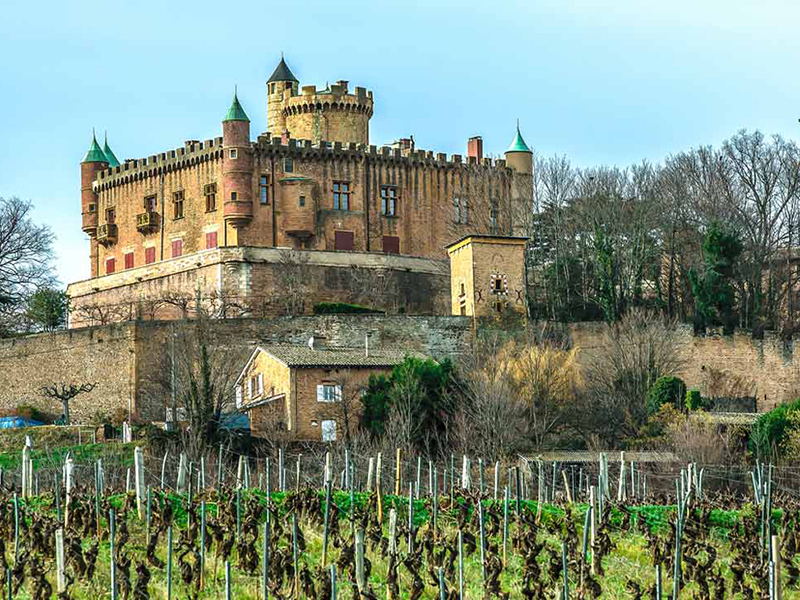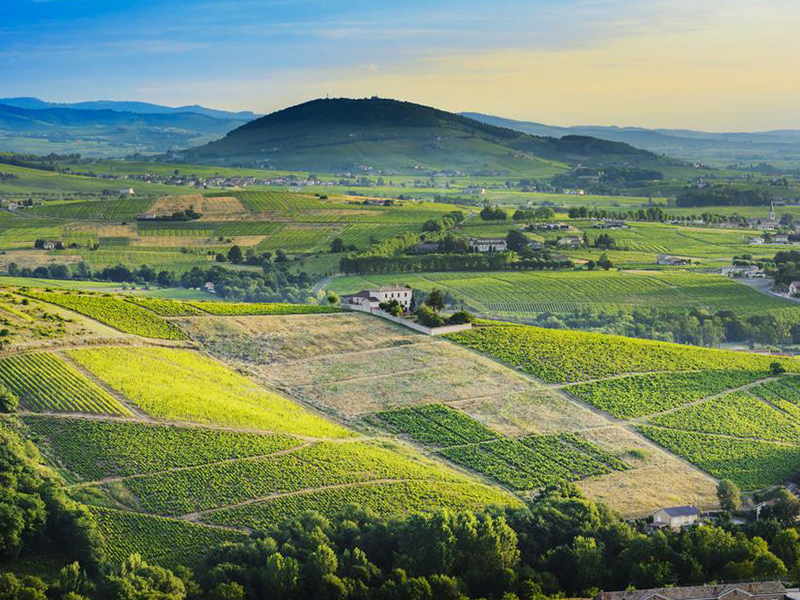Beaujolais
Eastern France
Beaujolais is an incredible wine region in the midst of an evolution, with the third wave of young and energetic producers taking the lead in family businesses that stretch back for generations. The region’s strength lies in its great diversity of soil types, elevations, and exposures, allowing for an impressive array of expressions to be made with two primary grapes: the red gamay (98% of plantings in the region) and white chardonnay.
Beaujolais begins at the southern end of the Mâconnais, and while it is officially a defined subregion of Burgundy, it is, like Chablis, generally considered distinct from it. Extending southward 55km, Beaujolais hugs the west bank of the Saône, terminating just north of its confluence with the Rhône River at Lyon, where the Northern Rhône wine region begins. Beaujolais is divided into 10 crus in addition to the Beaujolais AOC and Beaujolais-Villages AOC, altogether boasting 300 defined soil types.
Beaujolais is often associated with its signature vinification style—carbonic maceration, specifically, whole-cluster, partial-carbonic maceration. Through this method, intact clusters of grapes, hand-picked off the vine, are piled in a concrete or stainless steel tank that is then sealed off to the open air. The weight of the clusters causes those at the bottom of the tank to burst and begin spontaneously fermenting, emitting CO2 that penetrates the thin skins of the gamay grapes higher up in the tank. This causes intracellular fermentation inside of those grapes, due to the absence of oxygen. Carbonic maceration elicits lip-smacking, fruity flavors, emphasizing some of the best qualities of the gamay variety. The clusters will then be pressed, and conventional alcoholic fermentation via yeast will proceed, developing secondary flavors and complexity.
There is no tendency to a certain aging regimen; winemakers will utilize stainless steel, concrete, or old or neutral barrels to best support the wine. While the vast majority of AOC Beaujolais wines and of course, Beaujolais Nouveau are intended to be drank young, much cru Beaujolais can mature very nicely if well-cellared—at their best, approaching Burgundian pinot noirs in subtlety and complexity.
Beaujolais Blanc shares much with chardonnay from the Mâconnais, with which it overlaps, but can vary based on soil type. The tendency of style is toward freshness, eschewing malolactic fermentation and new oak-aging. Rosé is made, but rarely, retaining many of the characteristics of red-vinified gamay.
We are following the story and supporting the work of young vignerons in the Beaujolais region who are collaborating, pooling resources, trading expertise and equipment, and working their vineyards in a respectful, organic way. This communal atmosphere, along with an openness to change and progressive ideals has created an electric feeling, which makes Beaujolais one of the most exciting French regions to watch.
Beaujolais Crus (from north to south)
FLEURIE
North of Morgon, east of Chiroubles and west of Moulin-à-Vent. 90% pink granite, sandy at the surface. 340m elevation, up to 425m. Vineyards sheltered from the massif by the Avenas, Durbize and Labourons ranges, giving delicate, floral, elegant medium-bodied wine that has the potential to be more robust in certain years.
Wines from Fleurie
CHIROUBLES
Wedged between Morgon and Fleurie. Highest vineyards in the AOC, approaching 600m above sea level, with grades up to 30%. Lots of freshness but also good ripeness due to sun exposure. Generally the last cru harvested. All pink granite. Purple flowers, red fruit. Great pair for spiced or spicy food.
Wines from Chiroubles
BEAUJOLAIS-LANTIGNIÉ
West of Régnié, not yet a cru but due to be designated as one soon, with a goal of organic requirement for all wineries. 300-450m elevation. Pink granite on the east side and volcanic blueschist (pierres bleues) on the west. Great biodiversity and variety of exposures. Shares in the virtues of its neighboring crus, especially Chiroubles.
Wines from Lantignié
RÉGNIÉ
Northwest of Brouilly, west of Morgon, east of Lantignié. The newest cru, added in 1988. Red currant and raspberry, juicy with minerality, aromatic and accessible. 350-400m elevation. Believed to be the site of the first vines planted in the region, by the Romans.
Wines from Régnié
BROUILLY
Furthest south cru, south of Régnié and Morgon (though the Beaujolais AOC continues much further). Up to 300m. Largest cru, forms a loop around Mont Brouilly. Lots of soil variety: 46% pink granite, 4% blue stone, 50% combination of limestone, marl, clay, shale especially in the east. Round and smooth, defined by small red berries. Pairs with everything, ideal bistro wine.
Wines from Brouilly
CÔTE DE BROUILLY
A UNESCO global geopark, 300-450m elevation up the mountain, surrounded by the lower Brouilly cru. The highest proportion of blueschist in Beaujolais (40%) with 24% granite. Typically a mild, sunny climate, with soils heavily affected by ancient volcanic activity. Wines show notes of black pepper, small black berries, minerality, even a touch of grip—hinting at Northern Rhône profiles.







